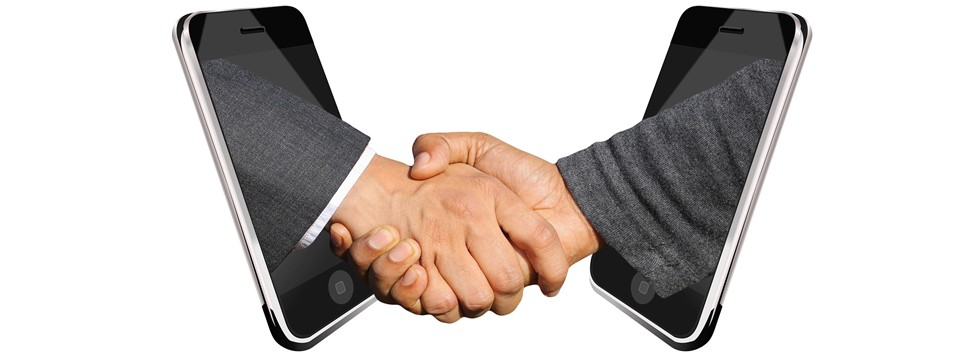
Introductions are invaluable whenever you are networking or looking for like-minded people, new clients, a potential job or board seat, business opportunity etc. A good introduction is a catalyst for conversation and potential relationships.
Providing helpful information when making an introduction is critical, yet people often miss the mark. It’s important to provide at least a little background and context to show that you're making a valuable introduction for both people.
Similarly, when you’re being introduced to others, be responsive and timely! Competing work priorities, a flood of unread emails or a calendar filled with meetings is no excuse for skipping basic professional etiquette. Your actions before, during and after introductions shape the impression you make on others and reflect your personal brand.
Keep the following tips in mind when making and receiving introductions to set the stage for effective relationship building.
When making introductions -- in person or online -- consider what to say strategically. The information you initially share will help each party to get a good, high-level picture of the other, spark interest and provide fodder for conversation.
Include current, relevant information about each person and, when possible, link to helpful resources like LinkedIn profiles, company websites etc. Explain how you know them, e.g., We worked together at ABC Company. Or, We met at (or on) the XYZ Conference when we were on a panel about unique ways to sell widgets. If appropriate, include something personal too., e.g., She's a cyclist, like you! Use discretion with anything personal, however (oversharing can lead to awkward situations).
If you’re loosely connected to someone -- or haven’t been in touch in a while -- reconnect FIRST whenever possible. This will make for better introductions later. Also, don’t oversell the depth of connection to someone or how long you’ve known each other, i.e., claim to have a closer relationship or stronger influence than you really do (this can reflect poorly on you later).
While you don’t always need permission to introduce people (especially when you know both parties well), it’s often appropriate to ask first, like when you want to connect people about a job opportunity. Even when it’s not necessary, seeking permission is still courteous, e.g., Hi Joe. I met the CMO of ABC Company on a networking Zoom last week. She just moved here from LA and is looking to meet other marketing execs involved in the widget industry. Is it ok if I send an email intro? It can also help circumvent communications delays. If you find out someone will be away on vacation for the next two weeks, for instance, you can advise both parties as to when you will circle back.
When you make meaningful introductions, your contacts are more likely to reciprocate and help you out too. Just as you’re expected to make honest, professional and courteous introductions, when you’re on the receiving end, you have obligations as well.
If you’re introduced to someone by email or LinkedIn, REPLY PROMPTLY. Not only is it rude not to, failing to reply in a timely manner reflects badly on your personal brand and can embarrass the person who initiated the connection. Worse yet, slow responses can lead to opportunity loss and dissuade others from making introductions on your behalf in the future.
If you can’t make immediate plans to connect, always respond to the new contact and suggest next steps, such as emailing again in a few weeks if you’re swamped (hint: put it in your calendar so you don’t forget) or scheduling a call several weeks out. Not responding -- whether to the initial email or follow-up steps -- is not acceptable.
When someone makes an introduction on your behalf, they've taken the time to think about how you might benefit from knowing a specific person. In doing so, they've also put their own reputation on the line. This investment of time and thought always deserves prompt and gracious acknowledgement, which is easily accomplished by including them in your initial response to the email introduction.
Following a successful connection, don’t forget to circle back to the person who first introduced you and update them about how things went, especially if the connection is a great resource for a job or business opportunity, or led you to additional people. Communicating the status of the new relationship and how it’s helped you (or how you’ve helped the other person) is one of the best ways you can convey your appreciation for their efforts. Your feedback also may encourage that person to think of others you should meet too.
If the person responsible for your meeting has to follow up with you to see if you and the other party ever connected -- or if they only hear about the results from the person they introduced you to -- it will reflect poorly on you. The best bet is always to fill them in yourself.
How you make and respond to introductions shapes the way others see you and can impact opportunities. Facilitating a well-thought out introduction not only provides a helpful picture of the parties you bring together, it builds your reputation as a valuable relationship broker as well. When on the receiving end of an introduction, timely response and follow-through will help you develop the new relationship and generate a positive impression too. While simple, these steps are fundamental aspects of professional communication, common courtesy and essential for a good personal brand.